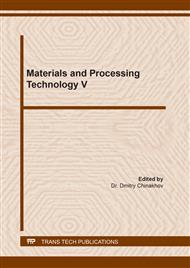p.39
p.47
p.57
p.63
p.73
p.83
p.93
p.99
p.107
Structure, Magnetic Characteristics and Stress-Strain State of Structural Steel Welded Pipelines
Abstract:
The analysis of factors affecting the state of the metal of pipelines of heating networks on the territory of hazardous production facilities is carried out, of which the effect of mechanical loads should be especially distinguished. The necessity of carrying out additional types of control along with visual and measuring control during routine inspections and after repairs of pipelines of heating networks has been substantiated. The method for measuring the coercive force and its measurement methods are considered, and a decision is made to develop a technique for studying pipelines of a heating network using this method. Samples for laboratory research have been prepared, namely, a fragment of a heating network pipeline, which has worked for over 10 years, and a fragment of a new pipeline with a similar steel grade. A plan for conducting experimental studies of the prepared samples has been prepared, including the developed methods of experimental studies of samples in accordance with the regulatory documentation, including: a method for studying samples of pipelines of heating networks by measuring the coercive force; method for determining the chemical composition of metals and alloys; methodology for carrying out metallographic studies. Measurements of the coercive force were carried out during the loading of the samples. A change in the coercive force with loading was recorded, mainly towards large values. In this case, the values of the coercive force on the sample, which worked in the territory of hazardous production facilities, are higher than those of the sample of the new pipeline. The complex of the studies carried out indicates that it is advisable at enterprises to measure the coercive force of the metal of pipelines of heating networks on the territory of a hazardous production facility during a routine inspection along with visual and measuring, as well as after repair and restoration work.
Info:
Periodical:
Pages:
73-82
Citation:
Online since:
February 2022
Authors:
Keywords:
Price:
Сopyright:
© 2022 Trans Tech Publications Ltd. All Rights Reserved
Share:
Citation:


